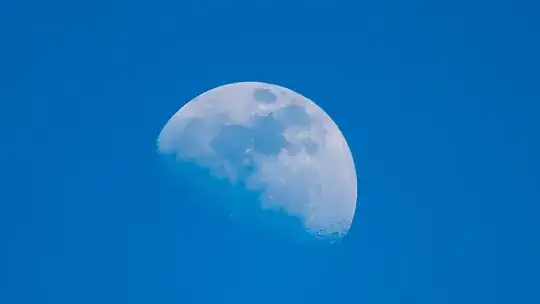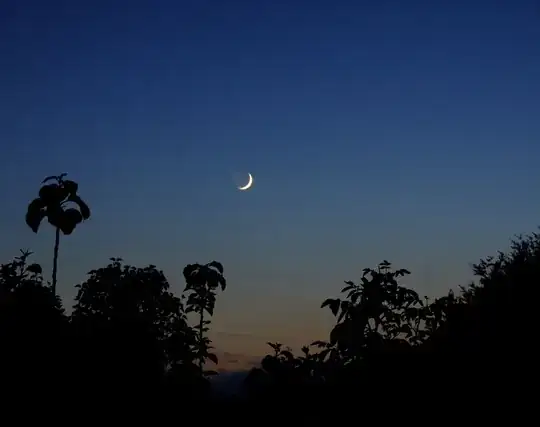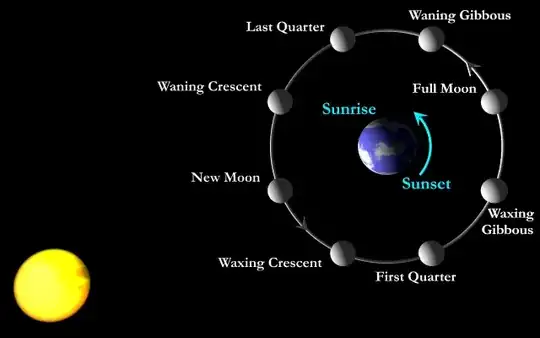Let's look at what the difference is between day and night.
In the day time, the air that's between you and the Moon is in the sunlight, but at night, that air is in the dark.
Day or night though, the air is still transparent (you can see the Moon through it), and the light from the moon is mostly unaffected.
When it's in sunlight, the air scatters some of the sunlight in your direction. For the parts of the Moon that are bright, they are so bright that they look white.
But the dark parts of the moon don't look black to you on Earth because there's still the fainter blue-sky light scattered by the air.
Moon during the day with bright blue sky light

Source
Moon at sunset with faint blue sky light mixed with Earthshine

Source


